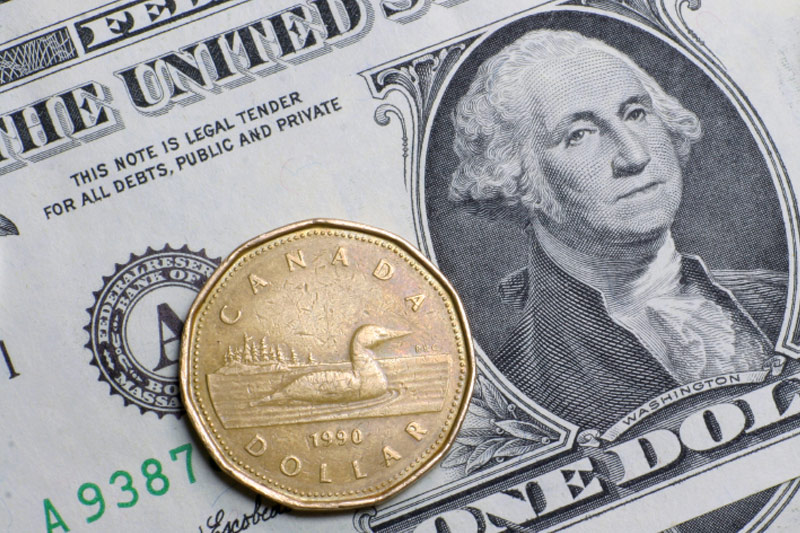Investing.com - The Canadian dollar turned lower against the U.S. dollar in choppy trade on Friday, after a run-up to four month highs on the back of higher oil prices and a brighter outlook from the Bank of Canada prompted investors to take profits.
USD/CAD hit lows of 1.2089, the weakest since January 21 before pulling back to 1.2246 in late trade. For the week, the pair was still down 2.61%.
The Canadian dollar was boosted by a rally in oil prices and a shift in the BoC’s outlook on the economy. Stronger-than-expected inflation data on Friday and a rebound in retail sales also boosted the loonie.
Oil prices have been well-supported in recent sessions due to mounting expectations that U.S. shale oil production has peaked and may start falling in the coming months.
Canada is a major energy exporter and the currency’s value rises and falls along with the price of oil.
The loonie hit session highs after Statistics Canada said Friday that the annual rate of inflation ticked up to 1.2% in March from 1.0% the previous month. Economist had expected an unchanged reading.
Consumer prices were up 0.7% from a month earlier, ahead of forecasts for a 0.5% increase.
At the same time, data showed that retail sales rebounded 1.7% in February, after a 1.4% drop in the previous month.
The reports came one day after the BoC held its overnight cash rate at 0.75%, indicating that January’s rate cut has been sufficient to offset the negative impact of lower oil prices.
The bank said it expects economic growth to have stalled in the first quarter of 2015 as a result of the oil price shock, but expects growth to rebound in the second quarter and subsequently strengthen on a quarterly basis.
The central bank surprised markets with an unexpected rate cut in January, which Governor Stephen Poloz described as “insurance” against the effects of lower oil prices.
The greenback remained broadly lower after data showing an uptick in U.S. consumer prices failed to offset concerns that recent signs of economic weakness could prompt a delay in interest rate hikes.
The Labor Department reported that the consumer price index edged up 0.2% last month, matching a similar gain in February. On a year-over-year basis, consumer prices dipped 0.1% in March after remaining flat in February.
Core consumer prices, which exclude food and energy costs increased 0.2% in March for an annual increase of 1.8%, the largest since October.
The report came after data earlier in the week showed that U.S. retail sales for March came in below expectations. Another report, showing a larger-than-forecast drop in industrial output last month pointed to a slowdown in growth in the first quarter.
The string of weak data added to the view that the Federal Reserve could push back hiking interest rates until late 2015 from midyear.
The U.S. dollar index, which measures the greenback’s strength against a trade-weighted basket of six major currencies, was last down to 97.62 late Friday. The index ended the week down 1.9%.
In the week ahead, investors will be looking ahead to reports on the U.S. housing sector and data on durable goods orders for further indications on the strength of the economic recovery.
Ahead of the coming week, Investing.com has compiled a list of these and other significant events likely to affect the markets. The guide skips Monday as there are no relevant events on this day.
Tuesday, April 21
Canada is to publish a report on wholesale sales.
Wednesday, April 22
The U.S. is to release data on existing home sales.
Thursday, April 23
The U.S. is to report in initial jobless claims and new home sales.
Friday, April 24
The U.S. is to round up the week with a report on durable goods orders.
